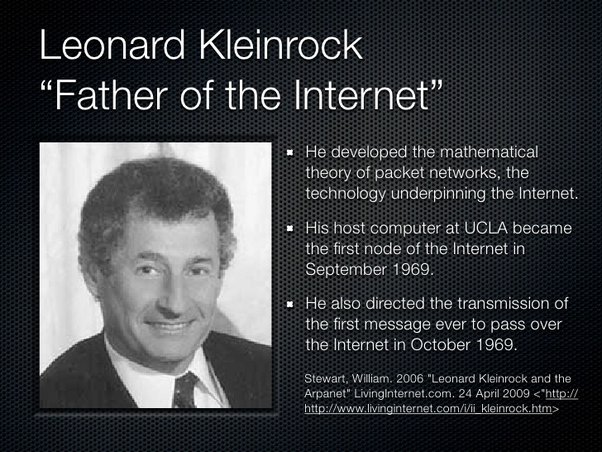Why is 127.0.0.1 used for localhost?
Although it’s not documented anywhere (at least as far as I know), but there are some logical explanations.
But before going over the explanation let’s first give a brief description of what is localhost addresses and what is used for.
What is the localhost address “127.0.0.0/8”?
In computer networking, localhost is a hostname that means this computer. It is used to access the network services that are running on the host via the loopback network interface. Using the loopback interface bypasses any local network interface hardware.
The local loopback mechanism may be used to run a network service on a host without requiring a physical network interface, or without making the service accessible from the networks the computer may be connected to. For example, a locally installed website may be accessed from a web browser by the URL http://localhost to display its home page.
IPv4 network standards reserve the entire 127.0.0.0/8 address block for loopback purposes. That means any packet sent to any of those addresses (127.0.0.1 through 127.255.255.255) is looped back. The address 127.0.0.1 is the standard address normally used for IPv4 loopback traffic; the rest are rarely used in practice. The IPv6 standard assigns only a single address for loopback: ::1.
So basically the localhost address used in testing software/applications. It’s a service provided internally by the operating system. You can ping the localhost address even if you have no functional network interface card “NIC”. You can easily test it. Go now and disable your NIC then try to ping 127.0.0.1 “127.x.x.x”.

- 0 = This
- The address zero is to be interpreted as meaning "this", as in
- "this network".
- For example, the address 0.0.0.37 could be interpreted as
- meaning host 37 on this network.
- The address of all ones are to be interpreted as meaning "all",
- as in "all hosts".
- For example, the address 128.9.255.255 could be interpreted
- as meaning all hosts on the network 128.9.
- The class A network number 127 is assigned the "loopback"
- function, that is, a datagram sent by a higher level protocol
- to a network 127 address should loop back inside the host. No
- datagram "sent" to a network 127 address should ever appear on
- any network anywhere.
- Pattern/Scheme “First and last IP”
We can easily see that the first and last number of any IP range is almost always special. For example the first Class A IP “0.x.x.x” is reserved, for any network, the first IP is reserved as it represents the whole network and the last IP is reserved for broadcast. So you can see there is some kind of scheme or pattern.
So they decided to use the last classful A network for the purpose of the localhost. Which is something seems so weird today, why would we waste an entire class A network while we just use one IP address. Back then they had no idea that there will be any need for all the possible IPv4 addresses, they just didn’t care about all the wasted IP addresses.
- 127.rrr.rrr.rrr Reserved [JBP]
- Class B Networks
- Internet Address Name Network References
- ---------------- ---- ------- ----------
- 128.000.rrr.rrr Reserved [JBP]
- 128.001.rrr.rrr-128.254.rrr.rrr Unassigned [JBP]
- 191.255.rrr.rrr Reserved [JBP]
- Class C Networks
- Internet Address Name Network References
- ---------------- ---- ------- ----------
- 192.000.001.rrr Reserved [JBP]
- 192.000.001.rrr-223.255.254.rrr Unassigned [JBP]
- 223.255.255.rrr Reserved [JBP]
- Other Reserved Internet Addresses
- Internet Address Name Network References
- ---------------- ---- ------- ----------
- 224.000.000.000-255.255.255.255 Reserved [JBP]
RFC 790 - Assigned numbers - Dec 1980
As you can see, back in 1980 they just reserved entire classful networks for no good reason.
- Low level implementation in mind.
The designers of the Internet really knew how the hardware worked, and they designed with low level implementation in mind.
The values 0, 127 and 255 are special in 8 bit assembly and machine language programming because there are "tricks" you can use to test for these values and branch to different code using smaller instructions that execute faster than for other integers. 127 is the highest signed 8 bit integer, so incrementing it by 1 will cause a signed overflow. Similarly, incrementing 255 will cause unsigned overflow. Merely loading the value 0 into a register will usually set a zero flag on the chip. Imagine the networking program looks like this in pseudocode:
- if (value == 0) doLocal();
- if (value == 127) doLoopback();
- if (value == 255) doNetwork();
Although it depends on the chip, in those days most chips could encode these tests with 2 words, 3 words and 3 words respectively (total 8 words) and further those particular tests were all likely to execute in 1 clock cycle each. Using any other value would probably require 4 words each (total 12 words), a 50% increase in code size and likely a 50% increase in execution time as well.
Why is localhost IP 127.0.0.1?
Some people suggest that it’s related to the old computers processor limitation. It was chosen to ensure the simplest calculations by the processor.
Other people think that the reserved range was randomly chosen, but I don’t like this theory.
Although back when the internet was created they didn’t imagine how the internet will be in the next years, Which is completely understanding but these people were geniuses, hard workers, …etc to chose things randomly.

For people out there studying CompTIA Network+ or CCNA, check AlphaPrep.net for high-quality study materials and practice tests.
- Upvote if you find this useful.
- Comment if you have a question or something to share.
- Follow if you are interested in reading more about computers and networks.
Have a nice day : )
南来地,北往的,上班的,下岗的,走过路过不要错过!
======================个性签名=====================
之前认为Apple 的iOS 设计的要比 Android 稳定,我错了吗?
下载的许多客户端程序/游戏程序,经常会Crash,是程序写的不好(内存泄漏?刚启动也会吗?)还是iOS本身的不稳定!!!
如果在Android手机中可以简单联接到ddms,就可以查看系统log,很容易看到程序为什么出错,在iPhone中如何得知呢?试试Organizer吧,分析一下Device logs,也许有用.


 @ioriwellings
@ioriwellings

【推荐】国内首个AI IDE,深度理解中文开发场景,立即下载体验Trae
【推荐】编程新体验,更懂你的AI,立即体验豆包MarsCode编程助手
【推荐】抖音旗下AI助手豆包,你的智能百科全书,全免费不限次数
【推荐】轻量又高性能的 SSH 工具 IShell:AI 加持,快人一步
· 被坑几百块钱后,我竟然真的恢复了删除的微信聊天记录!
· 没有Manus邀请码?试试免邀请码的MGX或者开源的OpenManus吧
· 【自荐】一款简洁、开源的在线白板工具 Drawnix
· 园子的第一款AI主题卫衣上架——"HELLO! HOW CAN I ASSIST YOU TODAY
· Docker 太简单,K8s 太复杂?w7panel 让容器管理更轻松!
2017-07-07 LINQ to SQL 和 Entity Framework